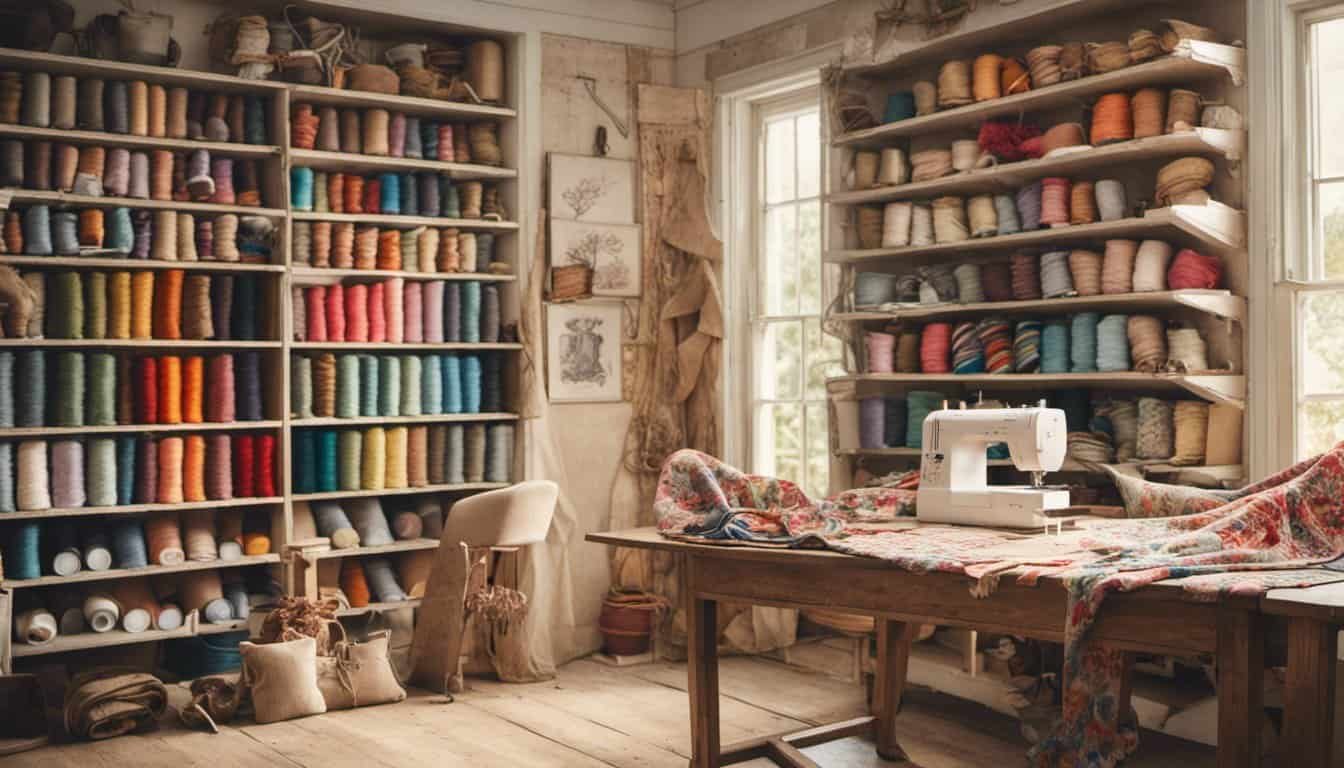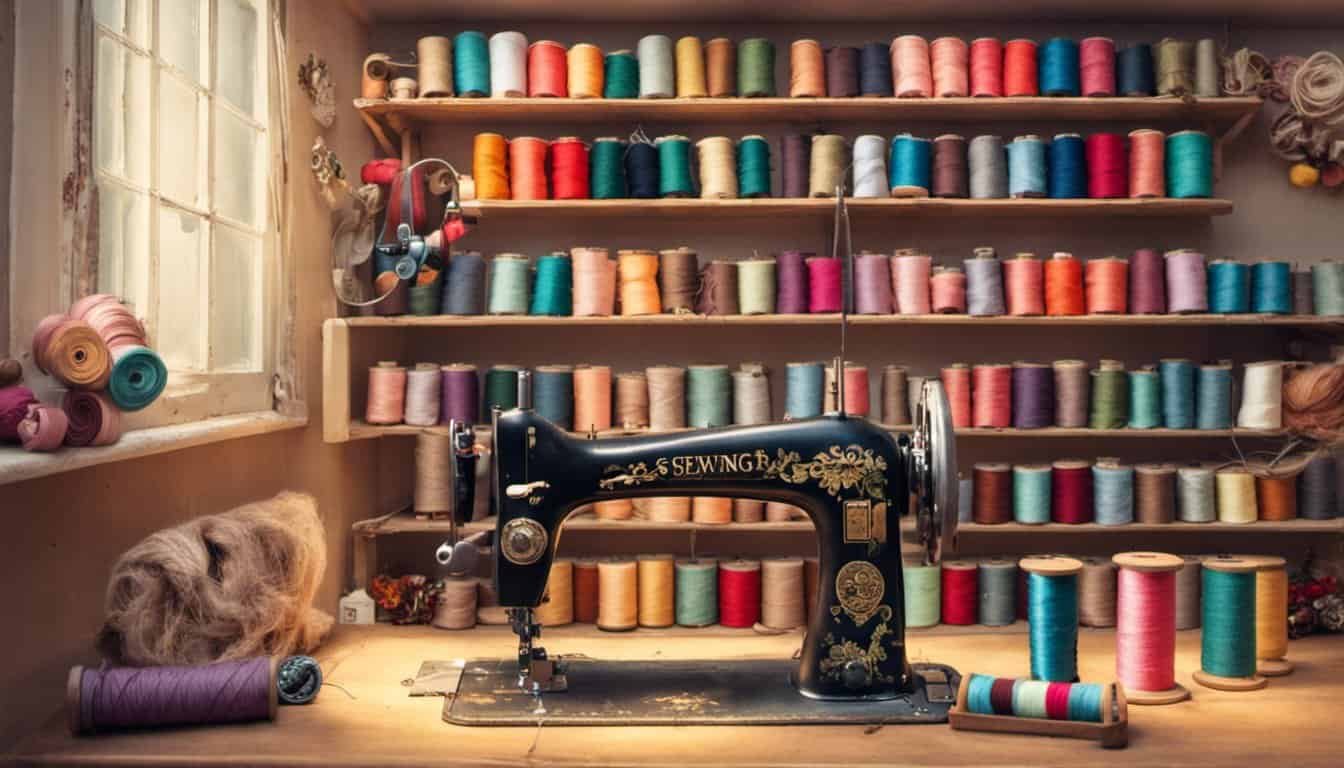Starting a sewing club in your area can be a fun and rewarding way to connect with fellow enthusiasts. Whether you’re a seasoned seamstress or just picking up a needle for the first time, a sewing club offers a supportive environment to share ideas and projects.
Imagine gathering regularly with friends to work on your latest creations, exchange tips, and inspire each other. You can explore different techniques, tackle challenging patterns, and even host workshops or guest speakers. Plus, it’s a great opportunity to build friendships and create something beautiful together.
With a little planning and enthusiasm, you can turn your vision into a thriving community. Let’s dive into the steps you need to take to establish a sewing club that brings joy and creativity to everyone involved.
Benefits Of Starting A Sewing Club
Community Building
Starting a sewing club creates a network of individuals who share your interest. You build connections that offer mutual support and foster a sense of belonging.
Skill Development
Joining a sewing club enhances your sewing abilities. You learn new techniques and receive feedback that improves your craftsmanship.
Access to Resources
A sewing club provides shared access to materials and tools. You benefit from collective resources, reducing costs and expanding your project options.
Increased Motivation
Participating in a sewing club boosts your commitment to sewing. Regular meetings and group projects encourage consistent practice and goal achievement.
Social Interaction
A sewing club offers opportunities to meet and engage with like-minded individuals. You enjoy socializing while collaborating on creative endeavors.
Creative Inspiration
Being part of a sewing club stimulates your creativity. You gain new ideas and inspiration from the diverse projects and perspectives of members.
Event Opportunities
A sewing club can host workshops and events. You participate in activities that enhance your skills and provide learning experiences.
Shared Knowledge
Members of a sewing club exchange tips and techniques. You gain valuable insights that enhance your sewing proficiency and problem-solving abilities.
Sense of Achievement
Completing projects with your sewing club brings a sense of accomplishment. You celebrate milestones together, reinforcing your passion for sewing.
Networking Opportunities
A sewing club connects you with industry professionals and enthusiasts. You expand your network, opening doors to collaborations and new opportunities.
Planning And Organizing Your Club
Effective planning sets the foundation for a successful sewing club. Organize your efforts by establishing clear goals and identifying potential members.

Setting Goals And Objectives
Define your club’s purpose to guide its activities. Establish specific objectives such as:
- Skill Development: Offer workshops on different sewing techniques.
- Project Completion: Set targets for group projects each month.
- Community Engagement: Host events to showcase members’ work.
- Resource Sharing: Create a shared inventory of sewing tools and materials.
Clear goals ensure members stay focused and motivated, fostering a productive and enjoyable environment.
Identifying Potential Members
Target individuals who share your passion for sewing and crafts. Consider these strategies:
- Local Community Centers: Post flyers or speak with coordinators to reach interested individuals.
- Online Platforms: Use social media groups and local forums to announce your club.
- Craft Stores: Partner with local craft shops to display information and attract members.
- Word of Mouth: Encourage current members to invite friends and family who enjoy sewing.
Diverse membership enhances the club’s creativity and resource pool, creating a vibrant and inclusive community.
Finding A Suitable Location
Selecting the right location ensures your sewing club operates smoothly and attracts members. Consider the following factors when choosing a venue:
Space Requirements
- Size: Ensure enough space for tables, chairs, and sewing equipment. A room of at least 200 square feet accommodates 10-15 members comfortably.
- Layout: Opt for a layout that allows easy movement and collaboration. Arrange tables in a grid or circular pattern to facilitate interaction.
Accessibility
- Location: Choose a venue centrally located within your community to maximize accessibility.
- Transportation: Ensure the site is accessible by public transportation and has adequate parking for members who drive.
- Disability Access: Verify the location is accessible to individuals with disabilities, including ramps and elevators if needed.
Cost and Availability
- Budget: Determine your budget for the venue. Community centers and libraries often offer affordable rental rates.
- Scheduling: Check the availability of the space on desired meeting days and times. Consistent scheduling helps maintain regular attendance.
Amenities
- Lighting: Ensure the space has ample lighting, both natural and artificial, to enhance the sewing experience.
- Power Outlets: Availability of sufficient power outlets is essential for using sewing machines and other electronic devices.
- Ventilation: Good ventilation maintains a comfortable environment, especially when using certain crafting materials.
Potential Locations
| Location Type | Advantages | Considerations |
|---|---|---|
| Community Centers | Affordable, spacious, central locations | May require advance booking |
| Libraries | Quiet environment, often equipped with tables | Limited availability during peak hours |
| Schools | Available during evenings or weekends | May have restrictions on usage |
| Craft Stores | Access to supplies, potential partnership deals | Possible higher costs or limited space |
| Members’ Homes | Cost-effective, flexible scheduling | Limited space, dependent on member availability |
Additional Tips
- Visit in Person: Tour potential venues to assess suitability and address any concerns directly.
- Negotiate Terms: Discuss rental terms and possible discounts for long-term use with venue managers.
- Backup Options: Have alternative locations in mind in case your first choice becomes unavailable.
« 10 Shocking Ways The Rise of DIY Sewing in the 21st Century is Transforming Fashion
You Won’t Believe How Easy Upcycling Shirts into Skirts Can Be – Step-by-Step Tutorial »
Choosing the right location sets the foundation for a thriving sewing club. Evaluate each option carefully to ensure it meets your club’s needs and fosters a welcoming environment for all members.
Gathering Necessary Supplies
To ensure your sewing club operates smoothly, gather essential supplies that cater to all members’ needs. Start with sewing machines, selecting models that accommodate various skill levels and project types. Aim for at least one machine per five members to maintain efficiency during group sessions.
Essential Tools and Materials
- Fabric Selection: Stock a variety of fabrics, including cotton, linen, and polyester, to support diverse projects.
- Threads: Provide multiple thread colors and types, such as cotton, polyester, and specialty threads for embroidery.
- Cutting Supplies: Include scissors, rotary cutters, cutting mats, and rulers to facilitate accurate fabric cutting.
- Measuring Tools: Equip the club with measuring tapes, seam gauges, and rulers for precise measurements.
- Pins and Needles: Ensure ample supply of pins, needles, and pin cushions for all sewing activities.
- Ironing Equipment: Have at least two irons and ironing boards available to assist with pressing fabrics and seams.
Storage and Organization
Organize supplies to keep the workspace tidy and accessible. Use storage bins for fabrics and threads, drawer organizers for tools, and shelves for larger equipment like sewing machines. Label each storage unit clearly to help members find what they need quickly.
Workspace Setup
Arrange the sewing area to maximize comfort and productivity. Provide adequate lighting, such as LED lamps, to ensure visibility while working. Invest in comfortable chairs and tables to support long sewing sessions. Additionally, consider adding power strips to accommodate multiple sewing machines and electronic devices.
Safety and Maintenance
Prioritize safety by supplying first aid kits and ensuring all electrical equipment is in good condition. Regularly maintain sewing machines by cleaning and performing necessary repairs. Provide instruction manuals and basic troubleshooting guides to help members address minor issues independently.

Optional Supplies
Enhance the club experience with optional items that can inspire creativity:
- Embroidery Hoops: For members interested in embroidery projects.
- Hooks and Hangers: To display completed projects.
- Pattern Books: Offer a selection of patterns to inspire new projects and techniques.
By gathering these necessary supplies, you create a well-equipped environment that supports creativity and collaboration, setting the foundation for a successful sewing club.
Promoting Your Sewing Club
Effectively promoting your sewing club attracts members and fosters community growth. Utilize diverse strategies to reach potential enthusiasts in your area.
Utilizing Social Media
Leverage platforms like Facebook, Instagram, and Meetup to announce meetings, share project photos, and engage with the sewing community. Create a dedicated page or group, post regularly, and use relevant hashtags such as #SewingClub and #CraftCommunity to increase visibility. Host virtual events or live-stream tutorials to attract a broader audience and encourage member interaction online.
Local Outreach Strategies
Distribute flyers at community centers, libraries, and local craft stores to inform potential members about your sewing club. Partner with nearby businesses, such as fabric retailers, to display promotional materials or sponsor events. Participate in local fairs or markets to showcase club activities and recruit new members. Additionally, collaborate with schools or colleges to reach students interested in sewing and crafts, enhancing your club’s visibility within the community.

Hosting Your First Meeting
Organize your first meeting by setting a clear agenda to guide discussions and activities. Start with introductions, allowing each member to share their sewing experience and interests. Prepare a welcome speech that outlines the club’s goals and planned activities if you want to establish direction early on.
Provide necessary supplies, ensuring each member has access to fabrics, sewing machines, and tools. Arrange the seating for comfort and collaboration, facilitating an environment where members feel encouraged to participate. Assign roles such as a treasurer, secretary, or project leader if your group is large enough, promoting responsibility and engagement.
Introduce icebreakers to help members connect, such as sharing favorite projects or demonstrating a simple sewing technique. Plan an initial group project that accommodates various skill levels, ensuring everyone can contribute and learn. Discuss future meeting schedules, allowing members to choose convenient times and frequencies that fit their availability.
Encourage open communication by inviting suggestions and feedback, fostering a sense of ownership and community. Share contact information or create a group chat to maintain ongoing interactions between meetings. Highlight upcoming workshops or events, providing opportunities for skill enhancement and social interaction.
Conclude the meeting by summarizing key points and outlining next steps, ensuring everyone leaves with a clear understanding of the club’s direction and their roles. Thank members for their participation and express enthusiasm for future gatherings, setting a positive tone for your sewing club’s journey.

First Meeting Agenda
- Introductions
Share names, sewing backgrounds, and personal interests.
- Club Overview
Outline goals, planned activities, and meeting structure.
- Role Assignments
Elect officers or assign responsibilities like treasurer or event coordinator.
- Icebreaker Activity
Engage with a simple sewing demonstration or project discussion.
- Initial Project Planning
Choose a group project that accommodates all skill levels.

- Schedule Setting
Decide on meeting times and frequency that suit members.
- Open Discussion
Invite suggestions for future activities and workshops.
- Closing Remarks
Summarize key points and express appreciation for participation.
Supplies Checklist for First Meeting
| Item | Quantity | Purpose |
|---|---|---|
| Sewing Machines | 5 | Project work and demonstrations |
| Fabric Roll(s) | 10 | Initial group project |
| Threads | 20 spools | Various colors for projects |
| Scissors | 10 | Cutting fabric and patterns |
| Measuring Tools | 10 sets | Accurate measurements |
| Pins and Needles | 50 each | Securing fabric and embroidery |
| Ironing Equipment | 2 irons | Pressing seams and fabrics |
| Cutting Supplies | 5 sets | Rotary cutters and mats |
Tips for a Successful First Meeting
- Be Punctual: Start on time to respect everyone’s schedule.
- Stay Organized: Keep the agenda visible and adhere to the schedule.
- Foster Inclusivity: Ensure all members feel welcome and valued.
- Encourage Participation: Invite everyone to share ideas and feedback.
- Stay Flexible: Be open to adjusting plans based on members’ needs.
By following these guidelines, you create a welcoming and productive environment for your sewing club’s first meeting, laying the foundation for a thriving and collaborative community.
Conclusion
Starting your own sewing club brings together creativity and community in a wonderful way. You’ll enjoy working on projects with others who share your passion and watch your skills grow as you learn from each other.

Creating a welcoming space for everyone encourages friendships and inspires new ideas. With a little planning and enthusiasm you can build a vibrant club that makes sewing even more enjoyable and fulfilling for everyone involved

















